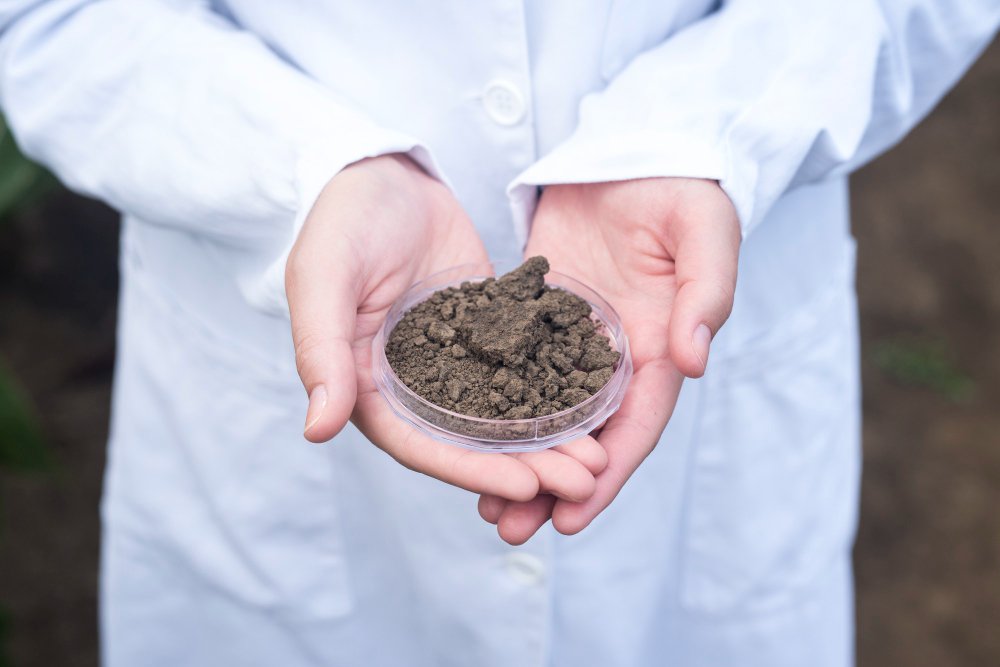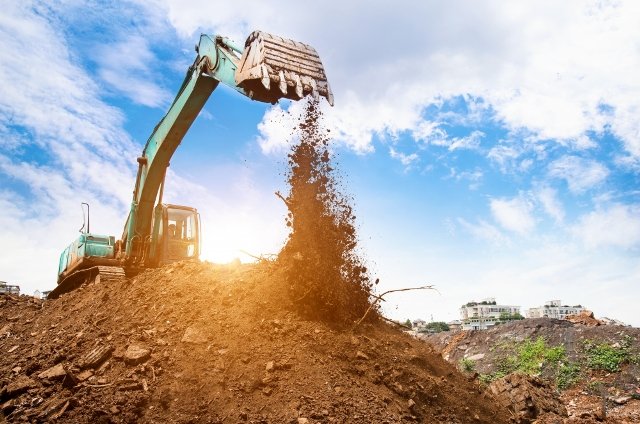
A Guide to Earth Excavation Process for House Construction
The Complete Earth Excavation Process
Earth Excavation of the earth is the procedure that effectively marks the beginning of the construction of any building project. On the surface, as the name implies, earth excavation is the process of moving earth, rocks or other material with the help of tools, hydraulic machines and labour. As simple as it sounds, the procedure is a complex one as it deals with preparing the right foundation for the project. The process and cost involved are affected by a multitude of factors.
Do many questions kick out of our minds, such as how the building’s blueprint should be? How should the foundation be? Is the site’s surrounding area suitable to construct a building or house? Foundation provides the very base for any construction dreams, and with the proper knowledge, you can ensure a healthy base for your project. Let’s have a look at some of the factors relating to the Earthwork process for house construction.
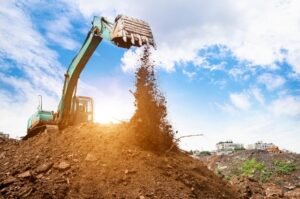
Factors Affecting the Depth Of Earth Excavation :
- Loads from building
- Type of soil
- Type of foundations
1.Loads From Building:
The first important factor to consider is the load from the building. Loads come in a combination of dead and imposed loads. On the basis of the construction site’s location, other loads like loads from wind, snow, earthquakes, etc., are also considered… Such loads can have a direct impact on the structure in the future.
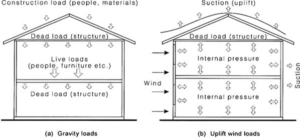
The type of structure, number of floors, and construction material will directly affect the amount of load on the foundation. The dead load and imposed loads will increase for sure with an increase in the number of floors.
Before it, we must ensure that the surrounding is supportive of the structure. A soil test can do this. Other factors are materials to be used for construction, such as steel or concrete also plays a significant role in impacts on construction. The buildings reinforced by concrete exert more loads on the foundation compared to steel structures.
The type of the foundation and the base area is calculated on the basis of the safe bearing capacity of the structure and the number of loads on the foundation. Based on the safe bearing capacity of structure and quantity of loads on foundation, type of foundation and its base area is calculated.
2.Type of Soils
Soil, as we know, is composed of fine solid particles, moisture, and air. Soils are of various kinds. It can be clayey soil or expansive soil, loose soils, or sandy soil. The soil close to the top layer is referred to as topsoil. Below, up to a depth of 300mm is called subsoil. The subsoil is what is used as the base for foundations for small buildings. Bigger buildings might need to dig deeper for foundation works.
To assess the construction properties, a Soil test plays a vital role and is a must. The test investigates many factors like the depth of the water table, various soil layers to know about the bearing capacity of the soil needed as required by the structure.

The load from a structure is transferred to the soil through foundations, and the soil consolidates. Thus settlement of foundation happens. The period for the consolidation process depends on the type of soil. For example, for non-cohesive soils, such as sands, the consolidation can happen quickly, while it may take years in the case of other soil types.
Clayey soil tends to hold the water for much more extended periods, and the result is a much slower settlement time that can take years. The amount of water is also much higher in the case of clayey soil. Due to these factors, foundation settlement in such soils is large.
Settlement of foundation is a crucial factor to consider as it can have many drastic effects on the structures built over them. They can cause cracks in building walls, beams, slabs, etc. In extreme cases, a building can even fail in case a large settlement occurs.
Types of Settlements
- Uniform Settlement
- Tipping Settlement
- Differential settlement

Investigating the soil becomes necessary in the case of large buildings. Estimating the bearing capacity based on soil and conditions at the site is not possible for such structures. The key aspects for soil investigation:
- The properties and density/thickness of the topsoil above the sub-soil
- The thickness, nature, and stratum depth of subsoil at the site.
- An examination of the allowable bearing pressure of the site ground.
- Level of the water table, the chemical composition of the land, etc.
- Existing elements or hazardous factors in the ground cause.
3.Types of Foundations
Foundation building is the most crucial part in building construction. The whole structural and floor planning of the future building depends on the foundation. It bears the load of the project.
Following are the foundation types based on the variety of soils and loads to be used for the buildings:
- Isolated foundations: It’s usually known as Pad or Spread footings. It is used for the Shallow Foundation. Examples: Columns and Pillars
- Combined footings: When two or more columns are mounted on a single sub-structure, the type of footing is also known as Combined footing.
- Pile foundations: It’s a type of long cylinder made up of solid material such as concrete. It is pushed into the ground to act as a support to the top of the building.
Raft or Mat foundations: It’s a continuous slab that rests on soil. It extends to the entire building area, which helps uniform load on the ground. It can be used best for basement construction.
Dressing
Dressing or trimming of the foundation is nothing but removing unwanted weeds, vegetation, and loose soil to eliminate minor irregularities in the surface of the site.
Cost of Earthwork Excavation depends on the following features:
Earthwork excavation largely depends on the required depth of it, nature, and the site soil and excavation method to be followed. The distance at which the excavated soil will be disposed also plays an essential role in the overall cost. All these factors sum up in the form of the per-unit excavation cost of the foundation site.
Based on depth, the cost of it is categorized as:
- For depth up to 1.5m
- For depth between 1.5m to 3m.
- For depth between 3.m to 4.5m.
- For depth more than 4.5m
It costs can drastically change depending upon projects and according to the variation of sites.
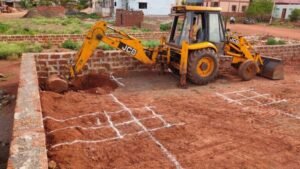
Most important factors to considered before commencing earthwork excavation:
- Type of soil.
- Transportation distance of excavated soil and transport for carrying excavated soil.
- Depth of excavation.
- This method applied– manual or mechanical.
- The capacity of labour for manual excavation.
- The capacity of mechanical excavation equipment and their cost per unit.
- Water charges if used.
- Profit of the contractor.
Earthwork Excavation Methods v/s Manual Labor
- Manual Labor
- Earth Moving Equipment
Earth Moving Equipment v/s Manual Labor
Benefits:
- It helps increase the output rate through work progress with the best practical and efficient methods.
- Overall construction cost is reduced.
- Activities that cannot be done manually can be done by equipment more economically and in less time.
- It eliminates health and manual issues and also reduces accidents.
- Maintains the planned rate of production where there is a shortage of skilled or unskilled labour.
- Maintain high-quality technical standards required by present-day designs and specifications.
Detriments:
- If the machine breaks down, it can cause a delay in construction work.
- Only skilled laborer’s can operate the equipment.

Conclusion:
Generally, all buildings require Earthwork excavation according to the type of site and structures to be constructed. The cut and fill earthworks cost depends on the depth of it on site. Perhaps certain factors like skilled labour and high-quality technical equipment need to be used. Many require a combination of earth-moving equipment and manual labour.
If you are looking for the proper construction partner that can take care of all your construction worries, right from preparing the foundation to completing your dream project, look for none other than Samruddhi.
Contact us today.
Archives
Categories
- No categories


